
Hamburger Dom: behind the scenes of the biggest funfair in northern Germany
Story
Vintage carousels meet crazy, ever-more technical and thrilling rollercoasters meet colourful and delicious treats: at the Hamburger Dom, history meets modernity and delivers timeless fun. It's not just many hands that make for light work, but also some powerful trucks from Mercedes-Benz.
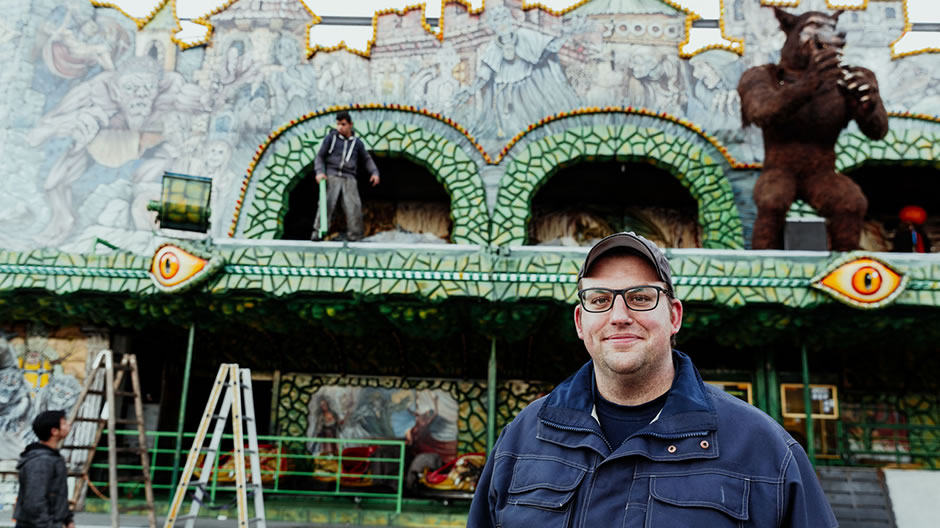
"Day or night, in rain or in snow, the show must go on."
– Gino Schütze, showman at the Hamburger
Dom
In just a few days, adults and children alike will be cheering and having a great time here yet again. In front of brightly painted stands and carousels, visitors will also be able to enjoy the smell of candyfloss, caramelised almonds and hotdogs. Current songs and tracks from times gone by will mix with the various voices of the ride announcers, the screaming rollercoaster riders and the screeching tyres of the dodgems – all in a single soundscape.
But before all of the stands and attractions of the Hamburger Winterdom have been assembled on the Heiligengeistfeld in the city's St. Pauli district, there's still a good amount of work yet to be done. Around 250 stands will have just two weeks to turn the 1.6-kilometre-long stretch into an experience for young and old alike.
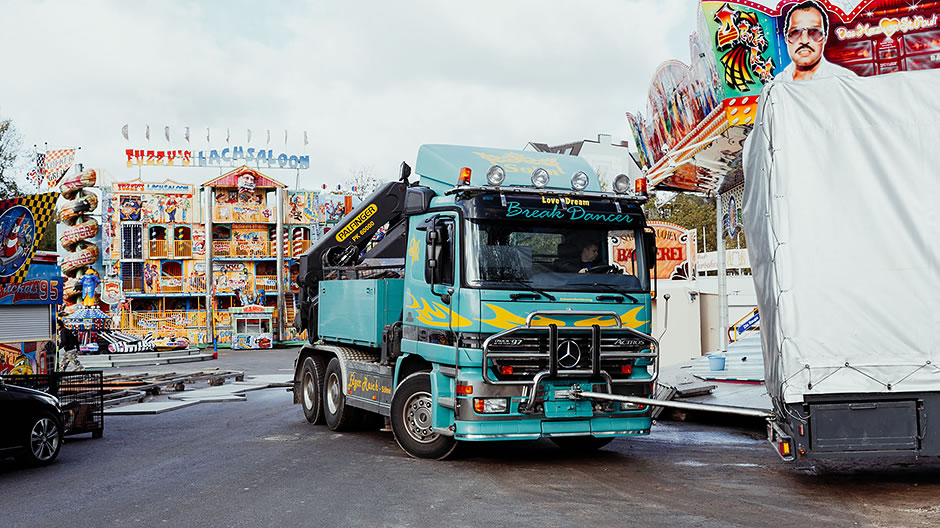
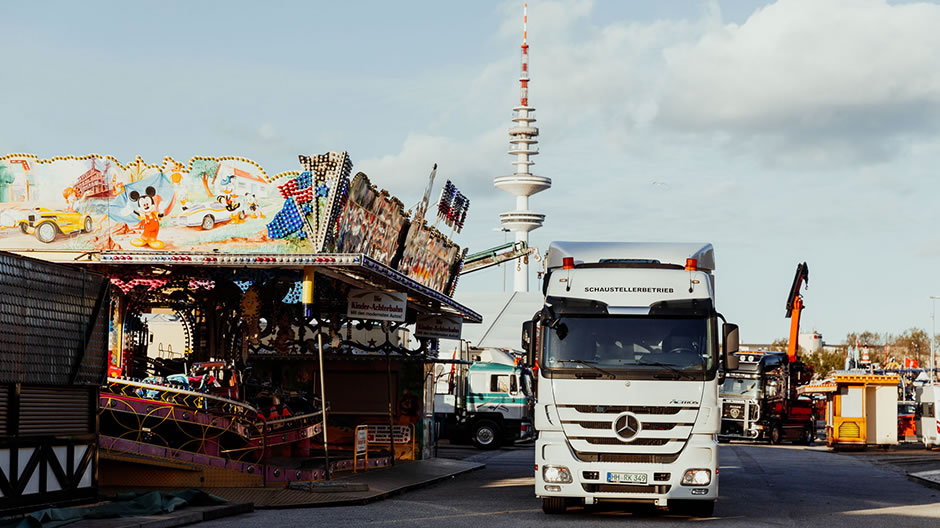
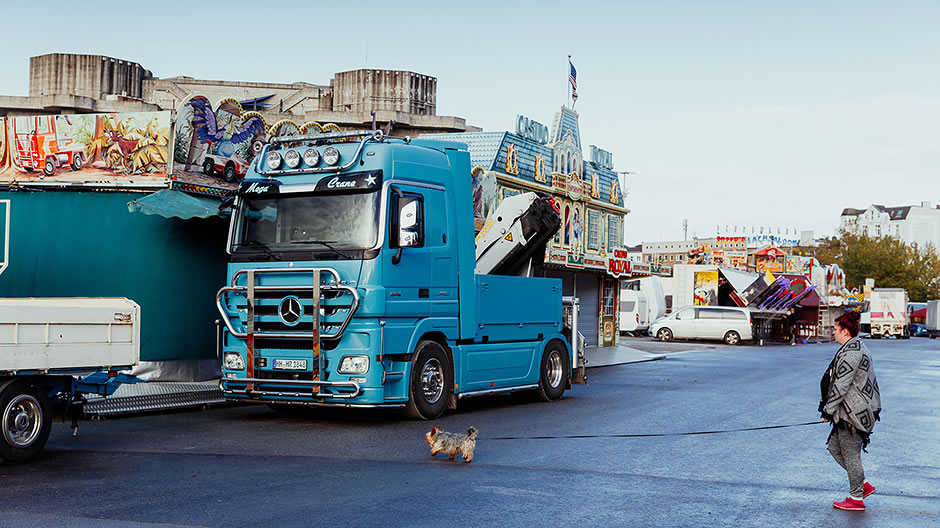
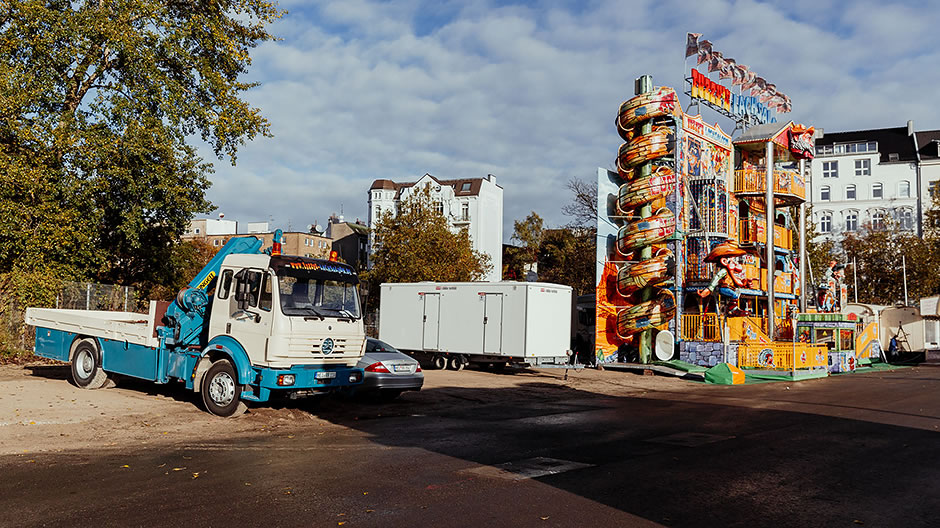
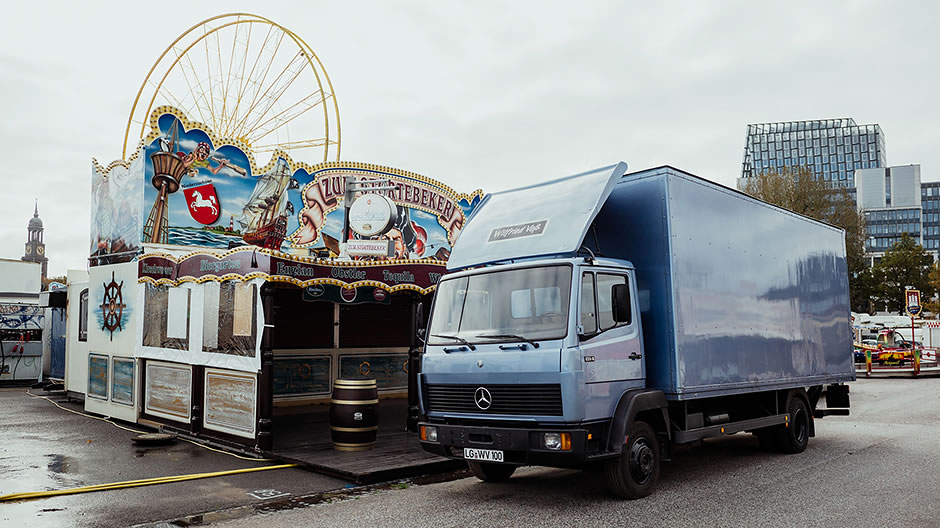
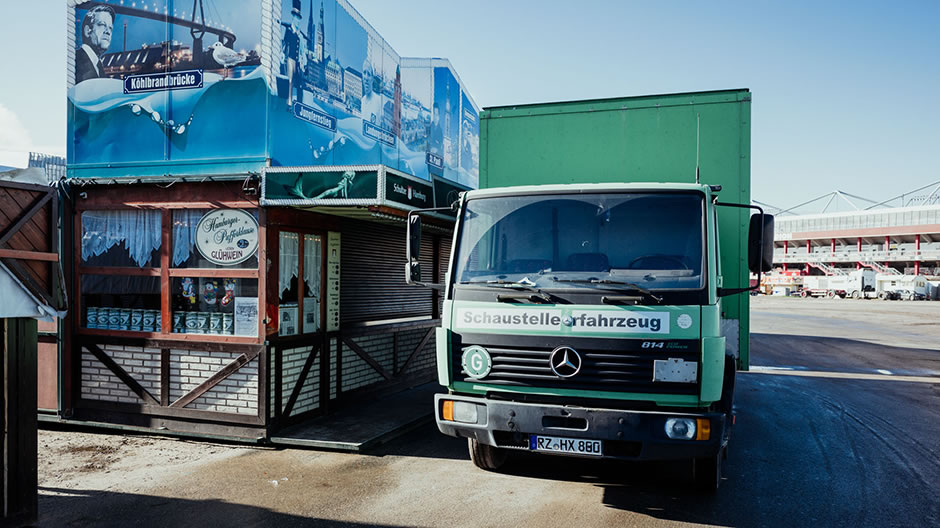
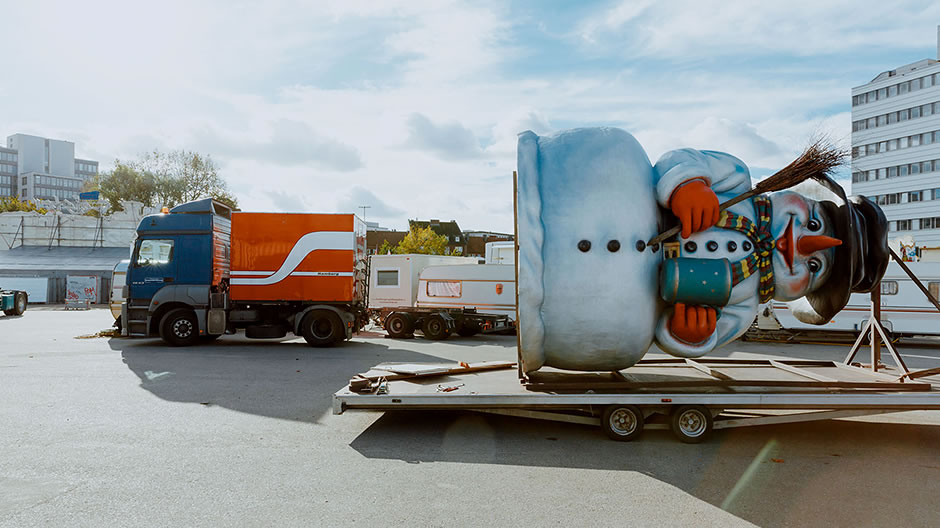
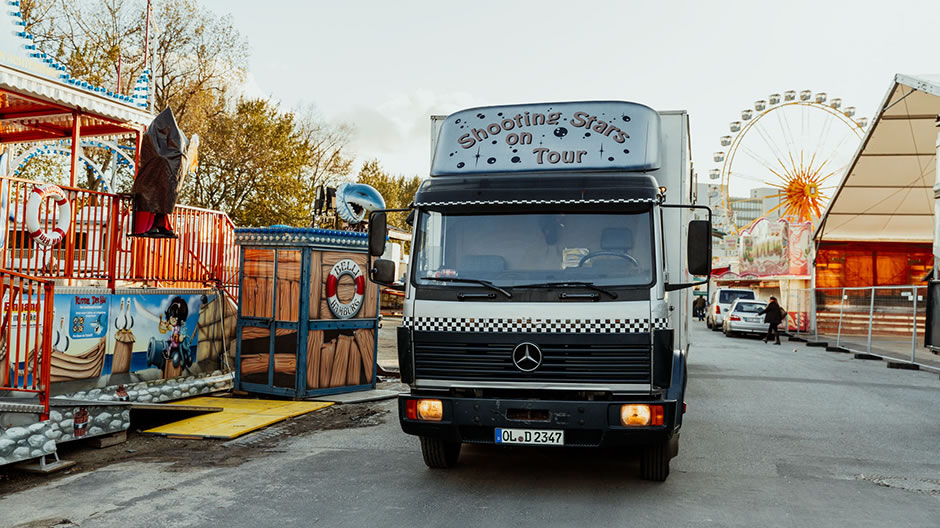
Horsepower in action.
Four days before the start of the fair, Gino Schütze and his father
Rudolf, together with their five employees from Romania have their
hands full. On their third day building up the attraction, there are
still some components of the 30-metre-wide multi-storey ghost train
lying on the floor, but inside, there's a whole lot of work waiting
for the team too. And when everything is set up, the fairground
showmen still have a load of components waiting to be checked and
cleaned, in addition to any defective bulbs which will need replacing.
"Having nothing at all to do actually never really occurs,"
tells Gino.
Indispensable helpers during the assembly of "Dracula's
Castle" are the family-run business's three yellow Mercedes-Benz
trucks with their platforms and cranes capable of hoisting 870
kilogrammes. Equally important are also the four truck trailers. Like
many a showman, Gino's family swear by trucks bearing the
three-pointed star: "We've had Mercedes vehicles for as long as I
can remember; back then we had the 320 models with either 10 or 26
cylinders." Today, we have an 1850 SK, an 1848 SK (both from
1994) and a 1735 SK (built in 1990). "Those are our workhorses.
They might be a little bit older now already, but they're well looked
after," says the 32-year-old proudly.
That's also true for the ghost train which was hand-built in 1975 by
a carousel manufacturer. Since it was initially built, it's been
freshly repainted and modernised a bit though. And in their home town
of Oberhausen, the family's warehouse is home to the oldest working –
albeit currently disassembled – ghost train in Germany, built in
1923.
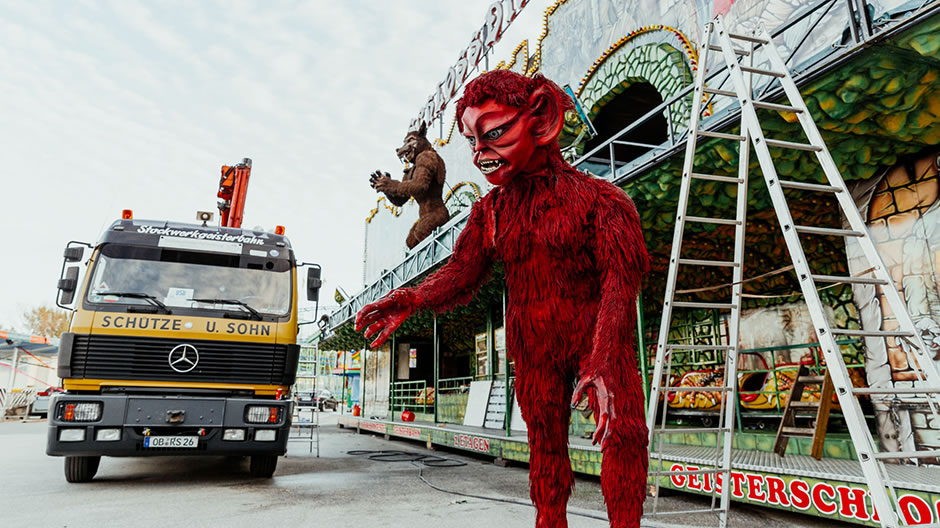
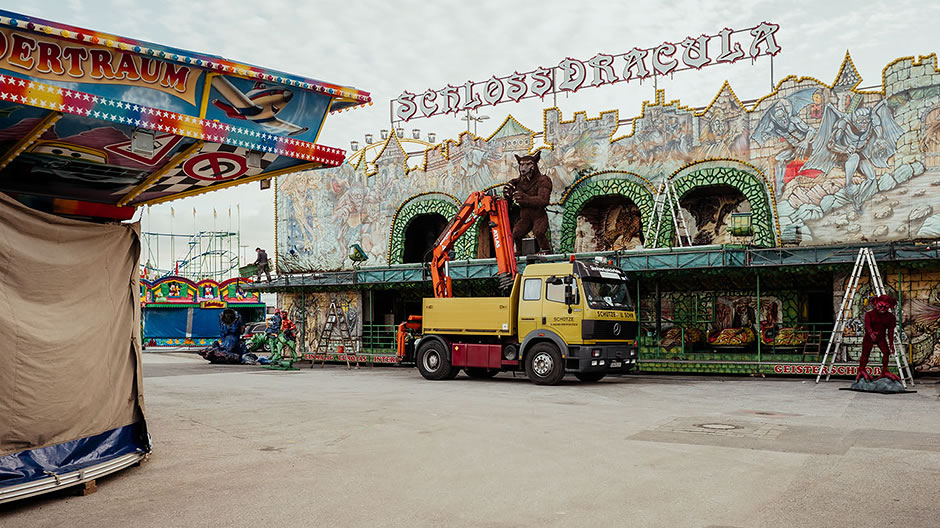
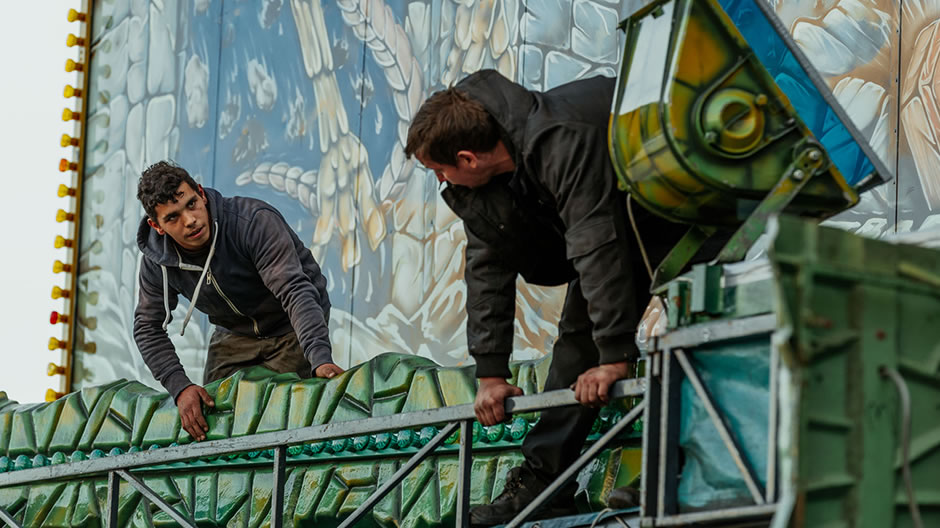
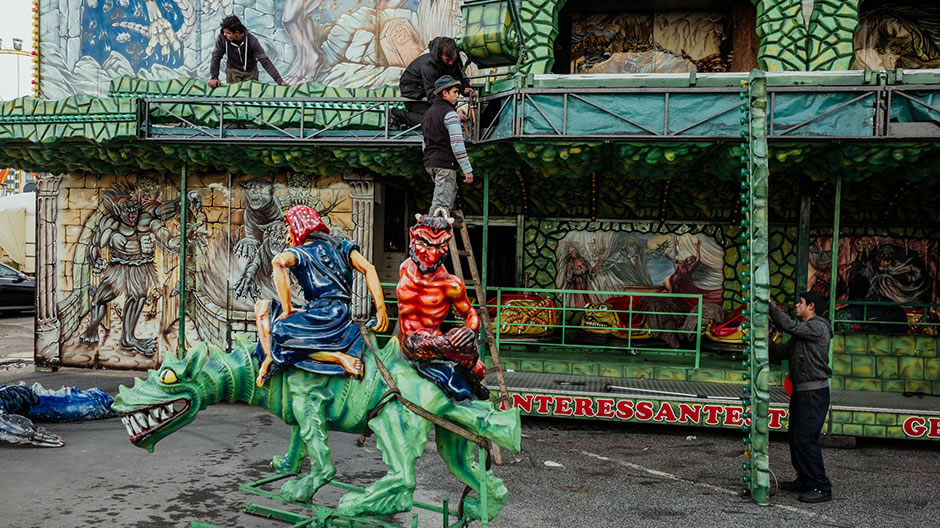
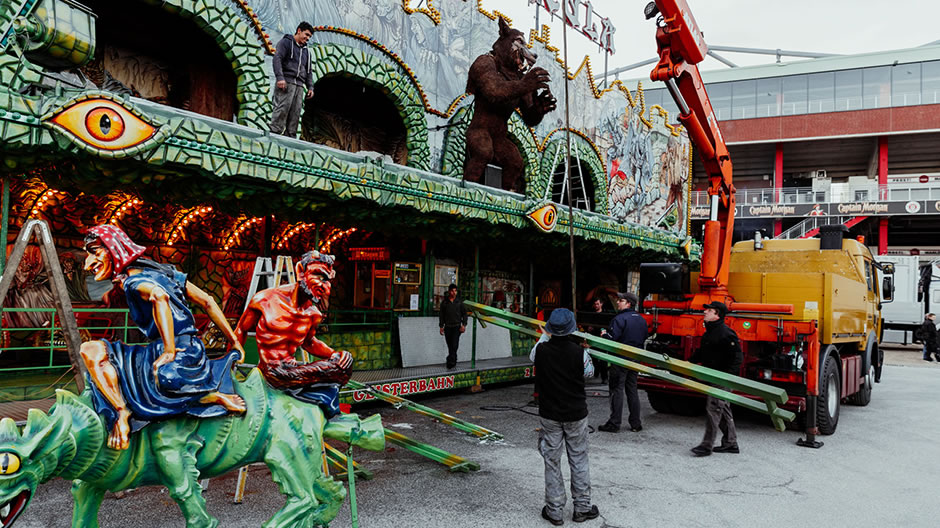
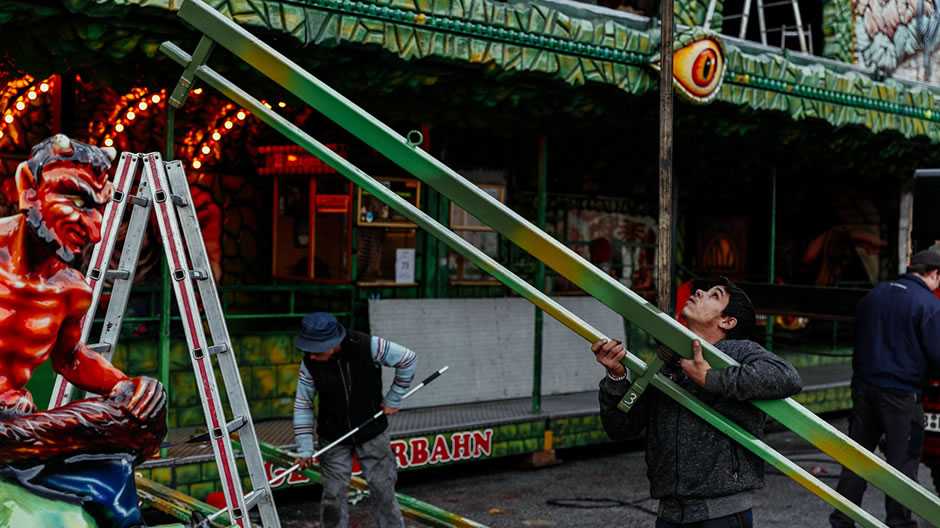
Showmen and fans of Mercedes for generations.
Already being run by the third generation, the Schütze family have
two ghost trains with which they travel between Flensburg in the north
of Germany and Munich in the south. "We've even already been to
Luxembourg," affirms Gino. Travelling is a part of the family's
everyday life. Those concerned learn exactly what that entails from a
very young age: as a child, Gino sometimes had to change schools every
week. "That keeps you all very closely knit and you also grow up
thinking like a manager," says Gino, adding with a smile: "I
find it quite difficult to take orders from others."
A classic type of training to become a showman at fairs doesn't
exist. My parents looked after that aspect – just like their parents
before them. "You learn to be an all-rounder, and somehow we're
able to do everything – from electrical work to engines, and anything
from wheels to gears."
Gino even taught himself a little Romanian so as to be able to communicate with his employees. One thing he can't imagine is doing any job other than being a showman at the fair: "Making people happy, always discovering new towns and seeing something new each time is great fun." That's one of the reasons he and his wife – also from a family of showmen – hope that their four-year-old daughter will continue their family tradition.
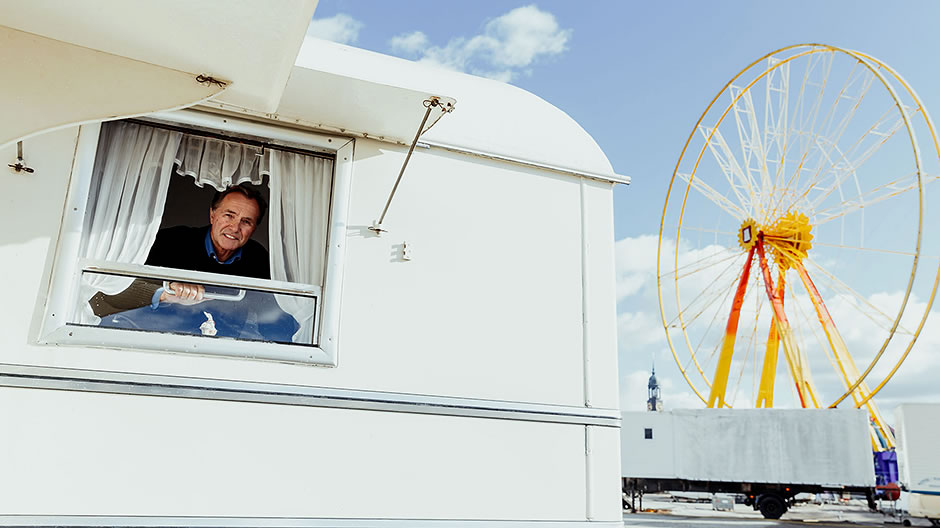
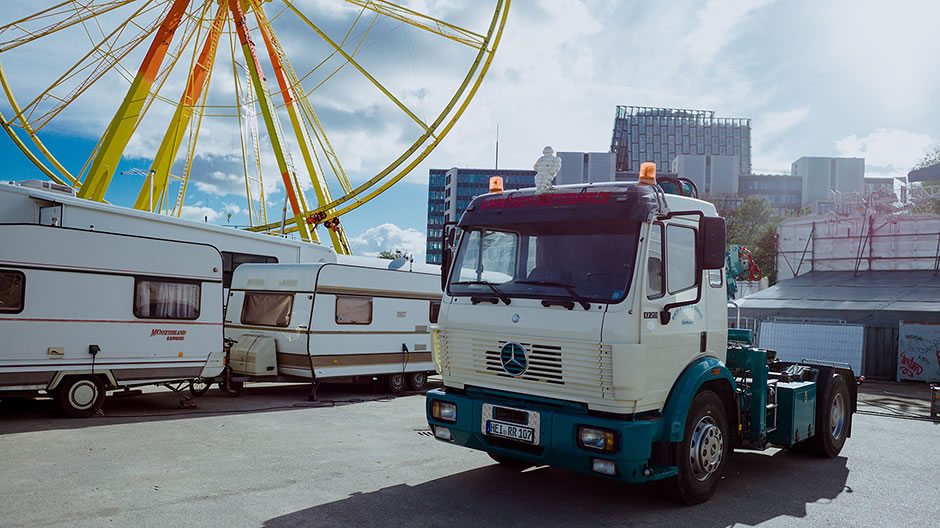
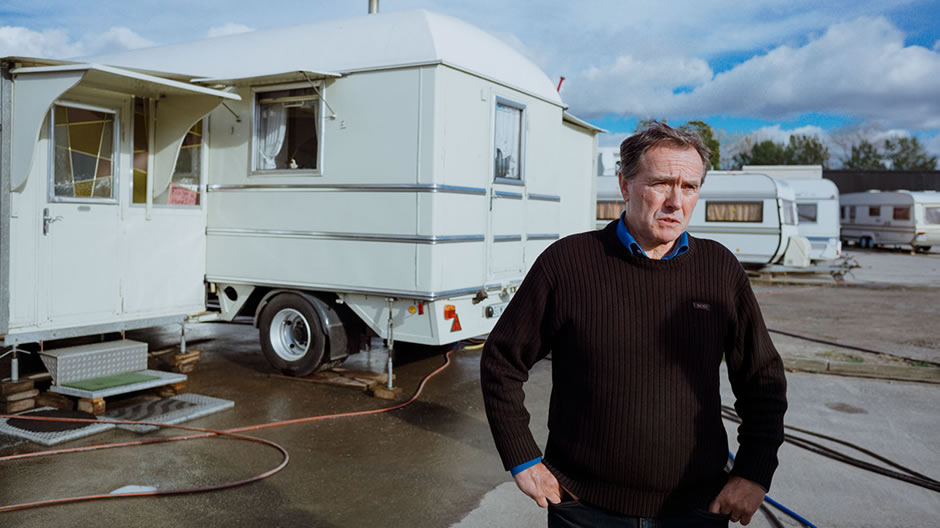
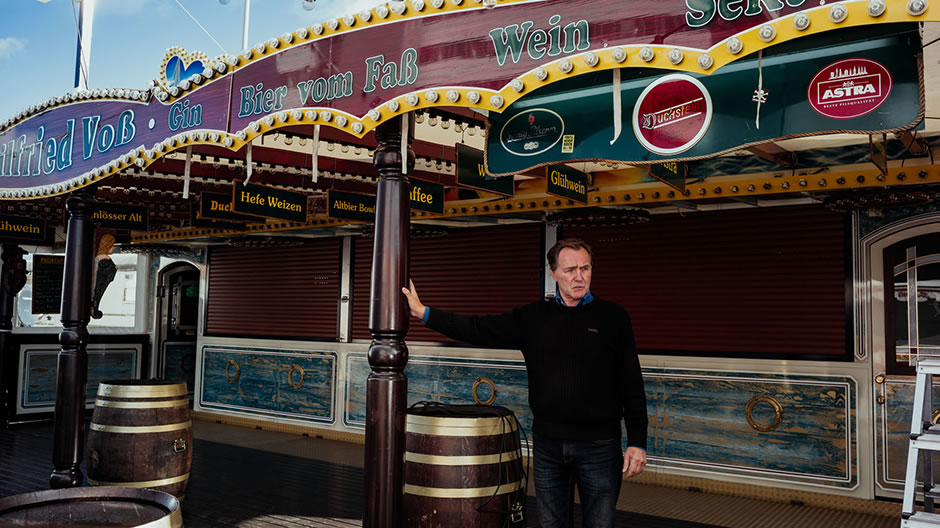
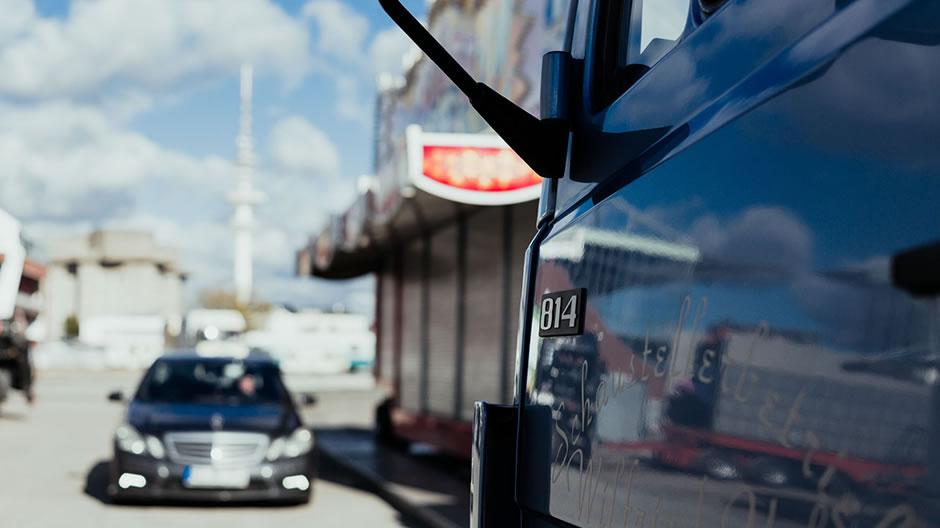
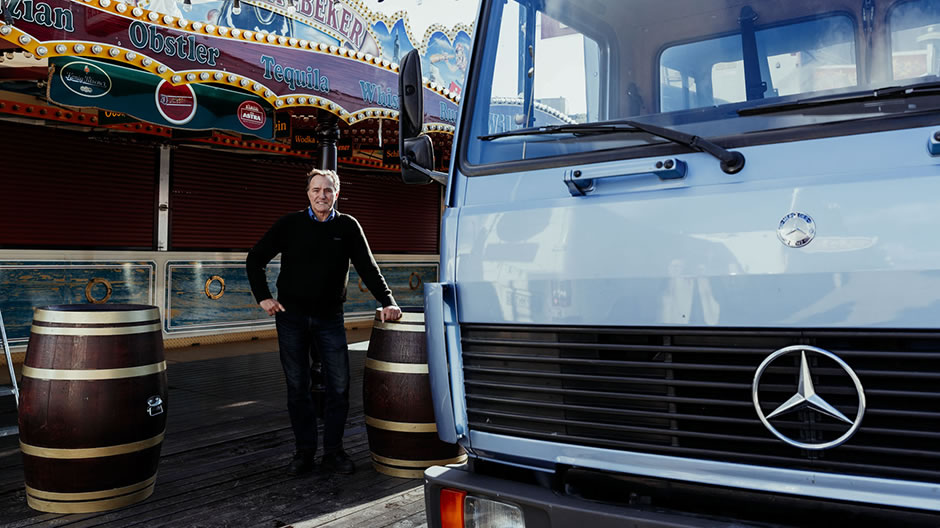
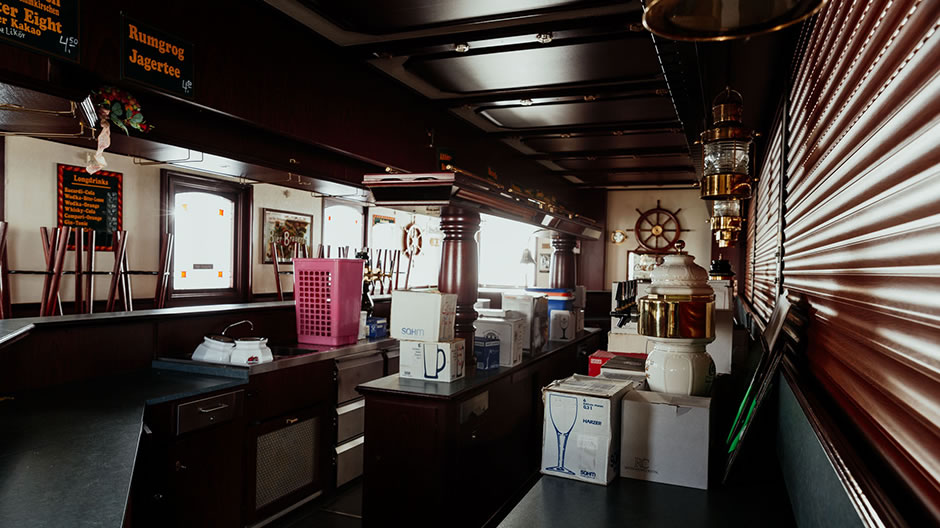
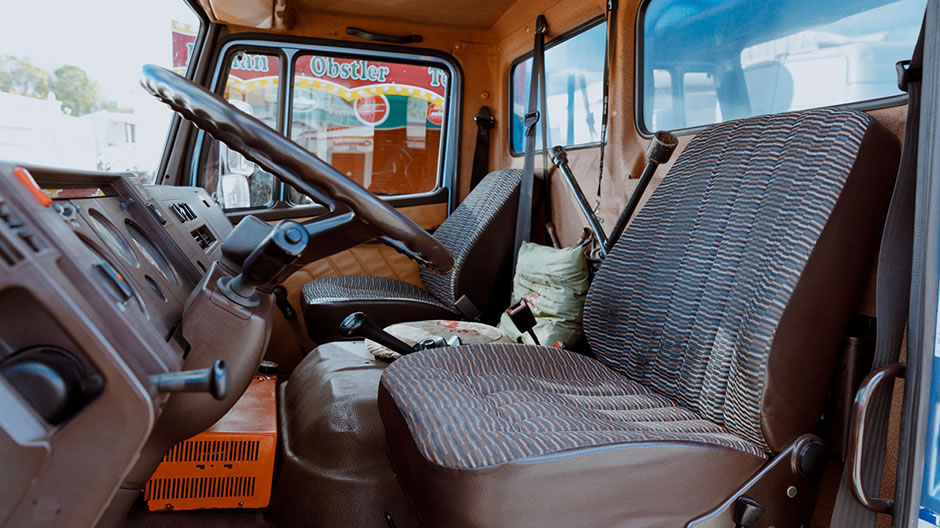
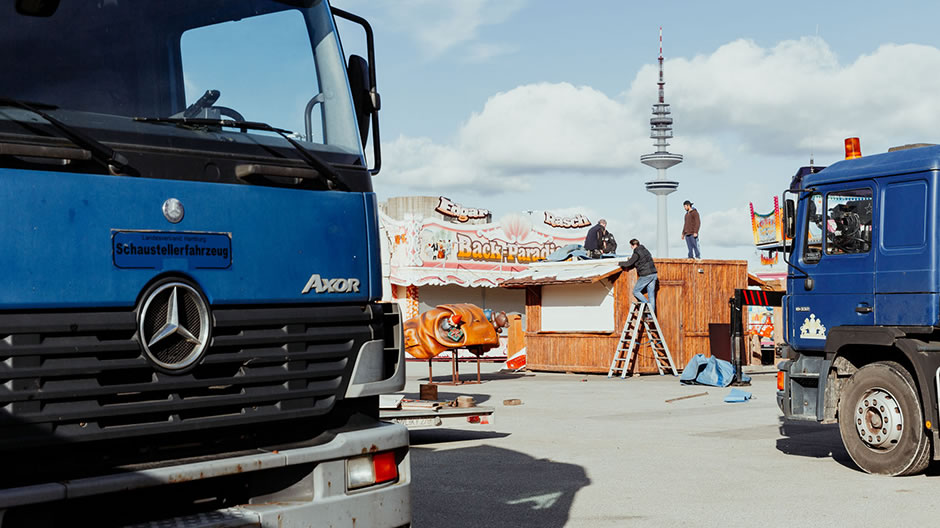
Pirate romance in St. Pauli.
From a very early age, Wilfried Voß from Lüneburg was also introduced to the running of fairgrounds and everything else which that entails: "I've been to at least 100 different schools." As a youngster, he initially wanted to become a decorator, but then changed his mind about "going private", as showmen call it. When Wilfried was 22, he and his brother had set their sights on buying their own carousel. But they didn't have sufficient money to purchase one and, in any case, their father was opposed to the idea. In the end, they were able to convince a banker to lend them the money they needed to purchase the "Flying Carpet" ride.
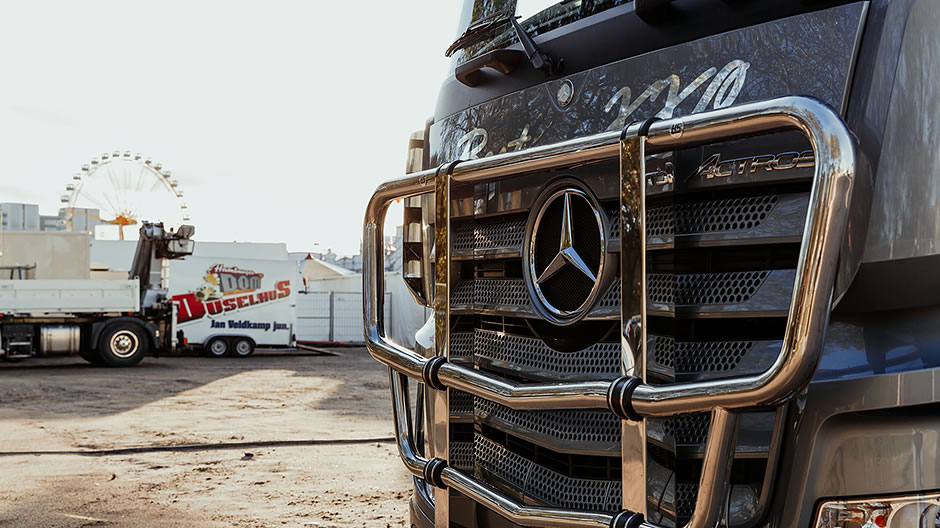
Family tradition with a star.
In the meantime, the 66-year-old head of the family is a father of
three adult children. His two sons are also showmen and, between them,
they run four food and drink stands. "And even though my daughter
has 'gone private', she of course still helps out on weekends,"
confirms Wilfried. With his "Zum Störtebeker" stand, which
sits directly opposite his brother's doughnut stand, their family
tradition is upheld and is now 'on the road' with the sixth generation
of the family.
Behind all this is also a great affinity towards Daimler: "We've been driving them for 50 years now. There was a 180 Pontoon model, a stroke eight, and then the 190, the 200, the 220, the 300 and the 280 models," explains Wilfried. In his garage, there is also a pristine, well-maintained Pagoda SL model from 1969. But he seeks to rebut the cliché that all fairground showmen drive big vehicles with a Mercedes star on the front: "Apart from the Pagoda, they were all workhorses." At the Dom, it genuinely is very difficult to find cars of showmen which don't have a trailer coupling. Wilfried: "The big cars aren't for showing off, they're for working."
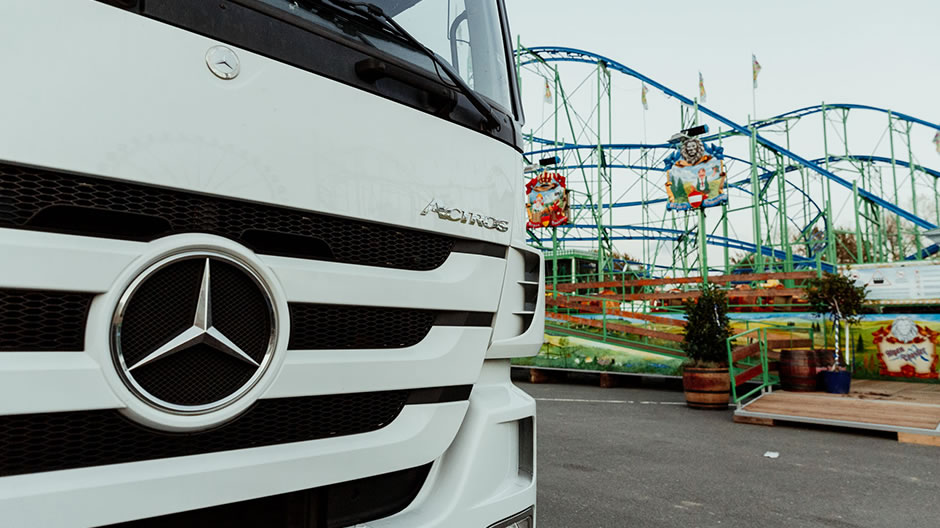
Indispensable: the 814 LK.
Also not shy of some hard work is his 23-year-old, but extremely
well looked-after blue 814 LK model with its 136 horses under the
bonnet. With it, he transports the beer garden of his 18-tonne
"Zum Störtebeker" stand to the various fairs in northern
Germany. And sitting around doing nothing is something which Wilfried
can't even envisage: "Finishing work in the afternoon is not
something with which we're familiar." For example, he just had to
replace 170 LED lights. And after building everything, the whole
interior and exterior has to be cleaned. Every glass needs washing and
each surface needs wiping down. But when Wilfried is standing there on
the evenings with his several thousand LEDs shining brightly at his
stand, his eyes shine just as brightly as they do.
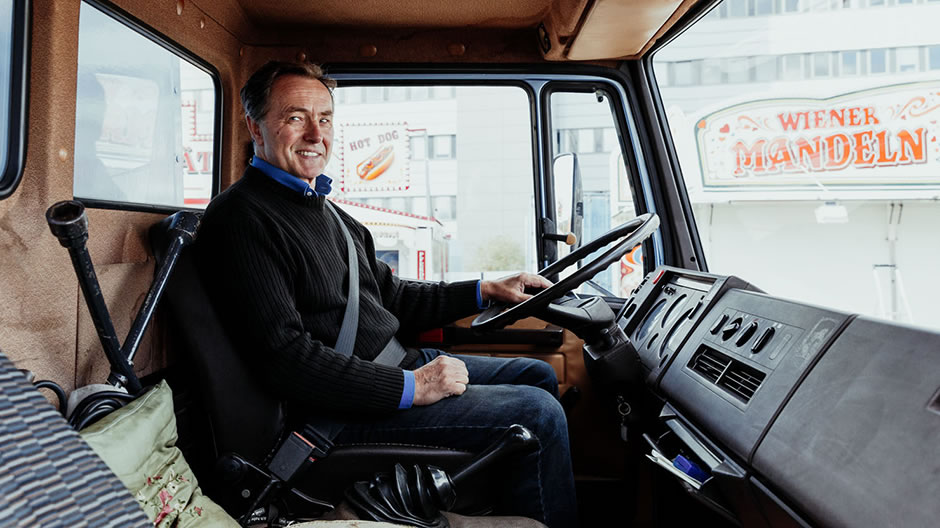
"The big cars aren't for showing off, they're for working."
– Wilfried Voß, fairground showman at the
Hamburger Dom
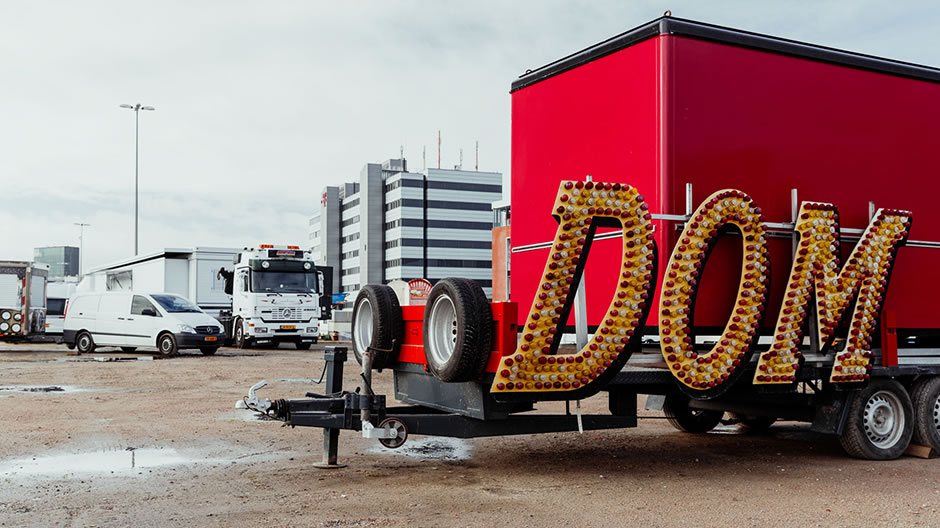
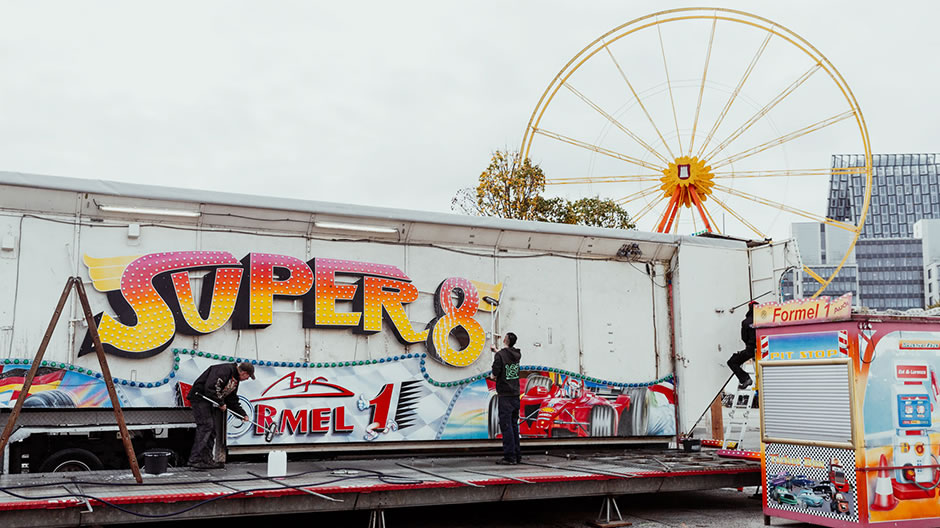
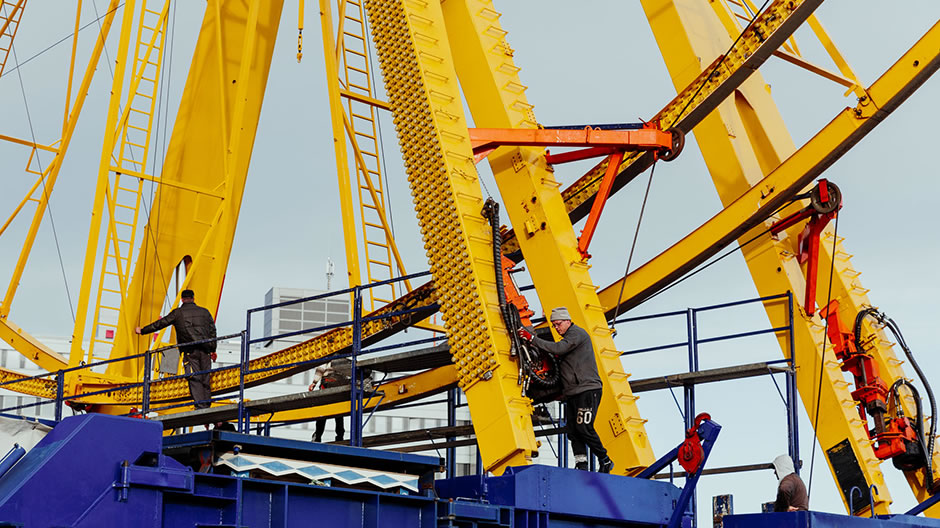
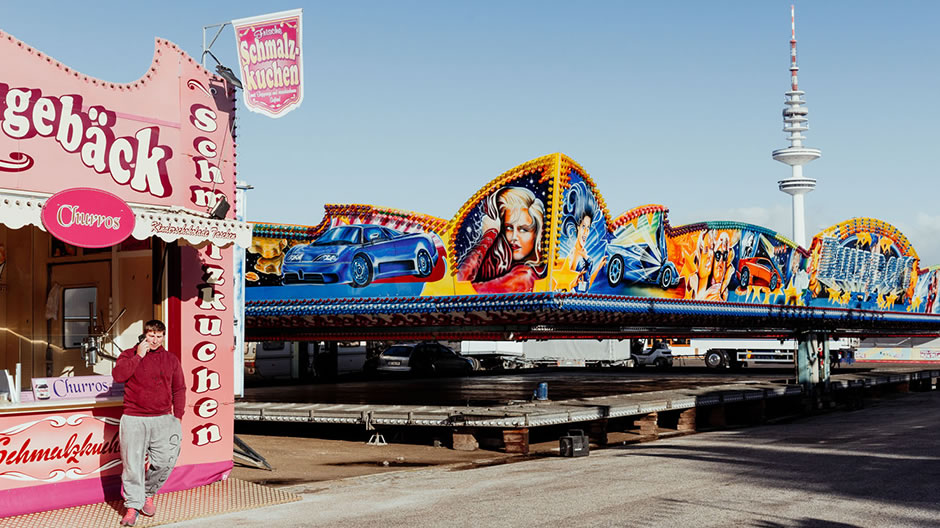

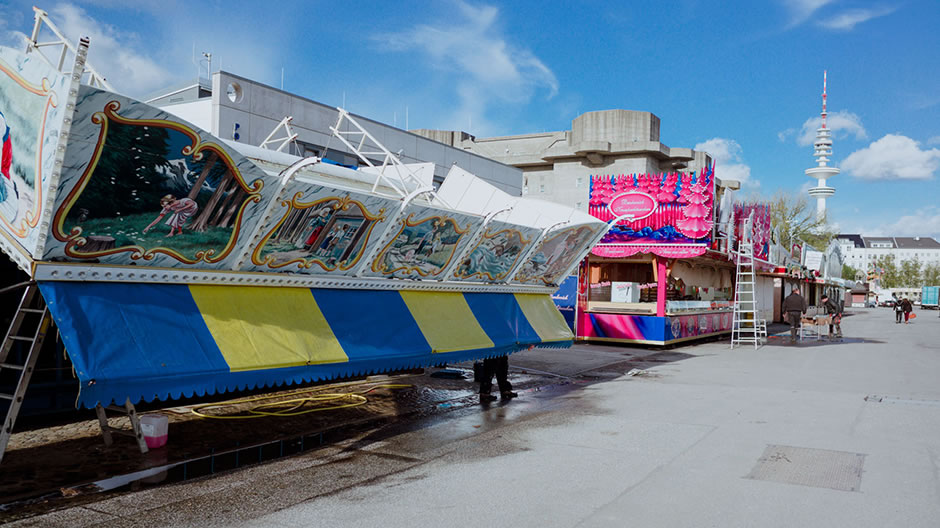
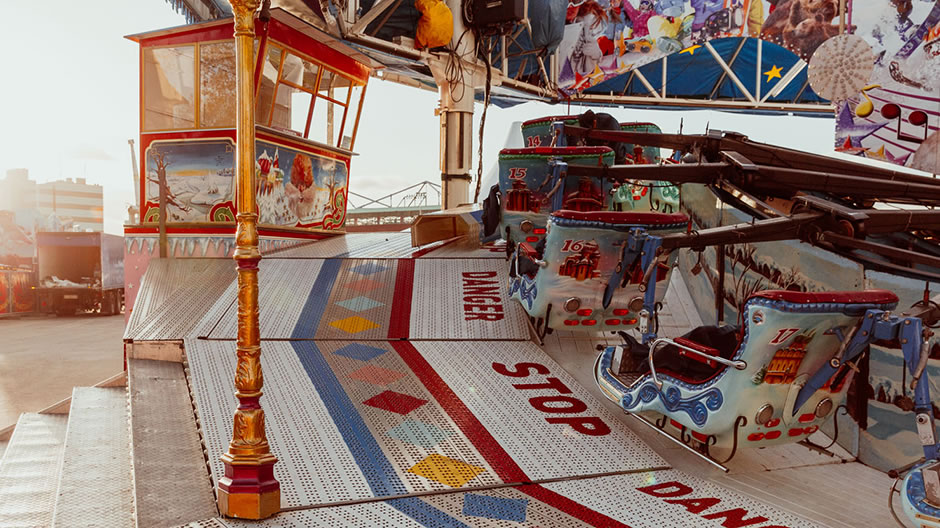
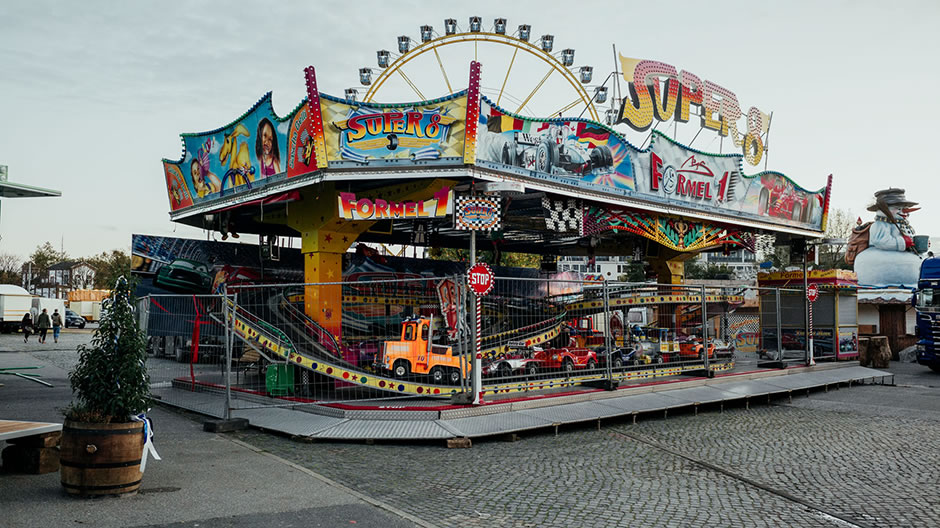
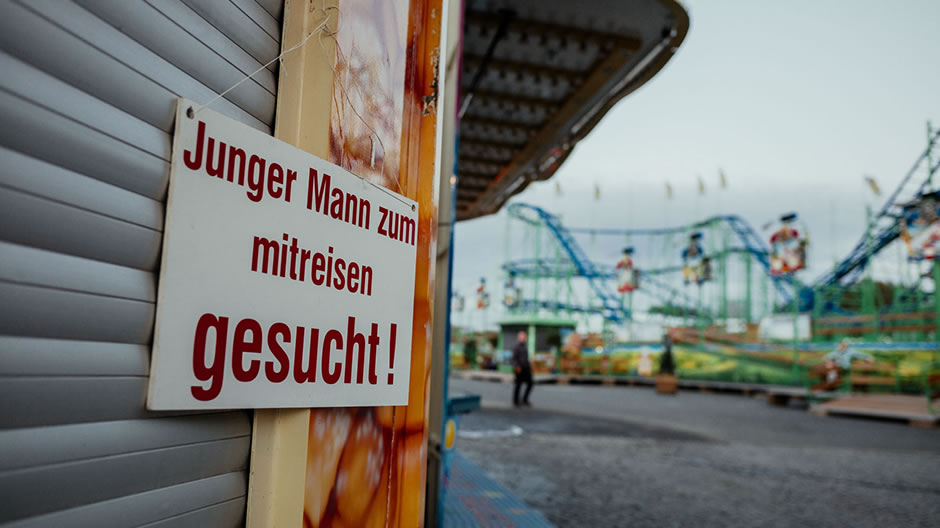
Hamburger Dom profile.
The Hamburger Dom is one of the trademarks of Hamburg, alongside the
likes of the Michel, the Elbphilharmonie and the Reeperbahn. Three
times a year for a period of four weeks each time, the biggest fair in
all of northern Germany opens its gates on the Heiligengeistfeld,
drawing in masses of visitors: in 2016, around 7.5 million people
headed to the Hamburger Dom, thus making the event an incredibly
important economic component of the city. The carousels, game stalls,
snack stands and drinks bars as well as further attractions are the
bread and butter for around 250 showmen and women and more than 2000
other employees. In the predominantly small to medium-sized
businesses, the fairground families have often been earning their
living for generations like this.
The yearly market was originally held on the Speersort square where Hamburg's former Mariendom Cathedral once stood. Already in the 11th century, it was commonplace for the travelling merchants to seek shelter inside the chapels of the cathedral – the "Dom" – while Hamburg's typical bad weather ran its course. And so the Hamburger Dom got its name. Since 1900, the event takes place on the 20-hectare Heiligengeistfeld in the Hanseatic city's St. Pauli district.
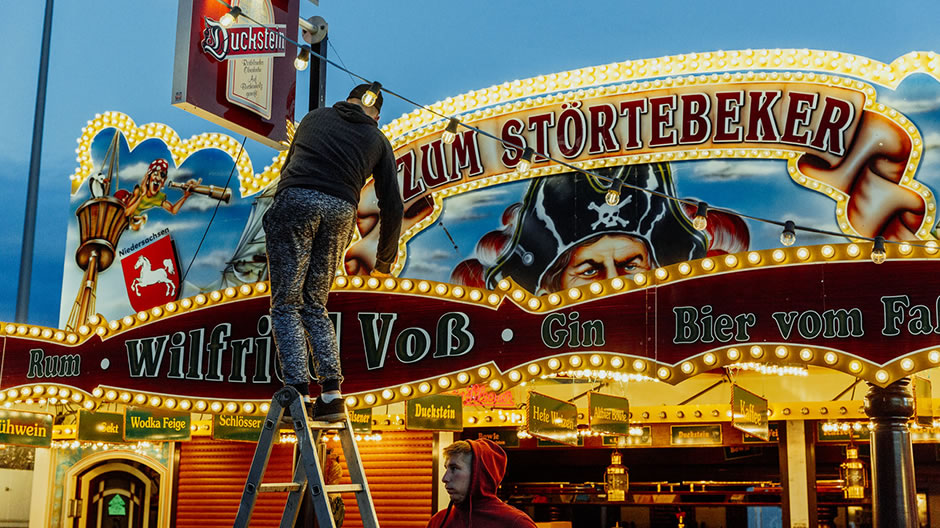
Nice at night, too: the light show on the Heiligengeistfeld.
Photos: Christoph Börries




Comment
Please log in to post a comment.
1 comment